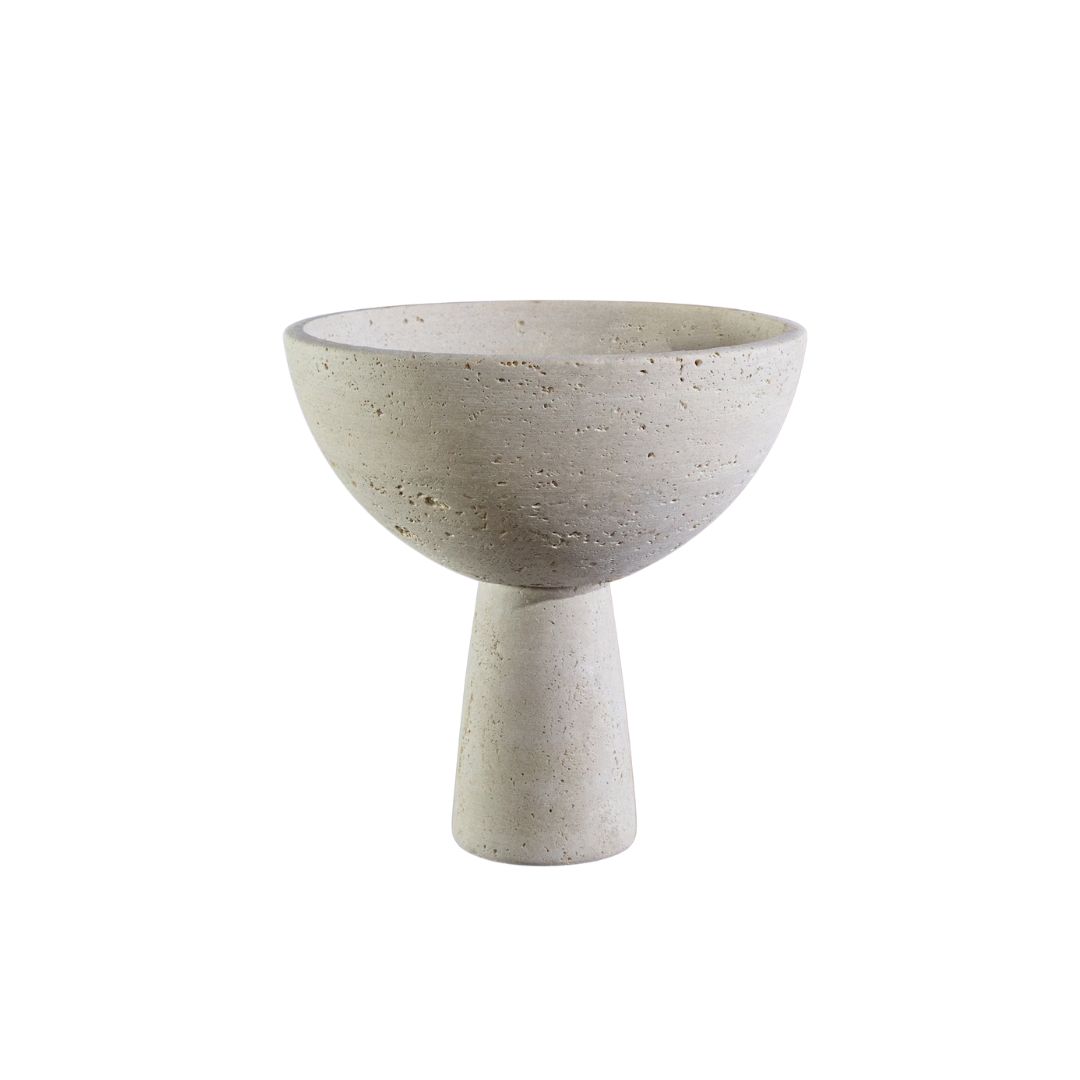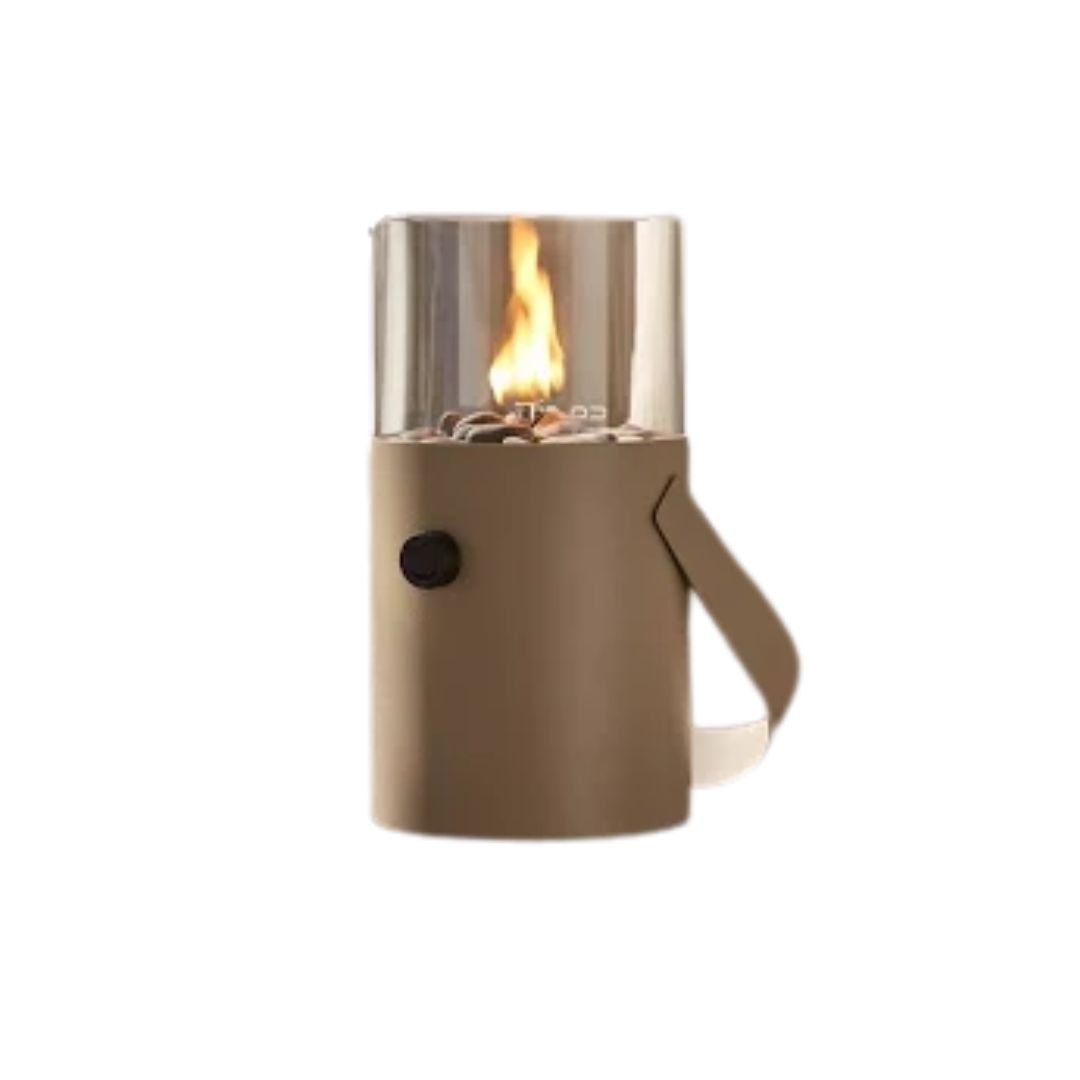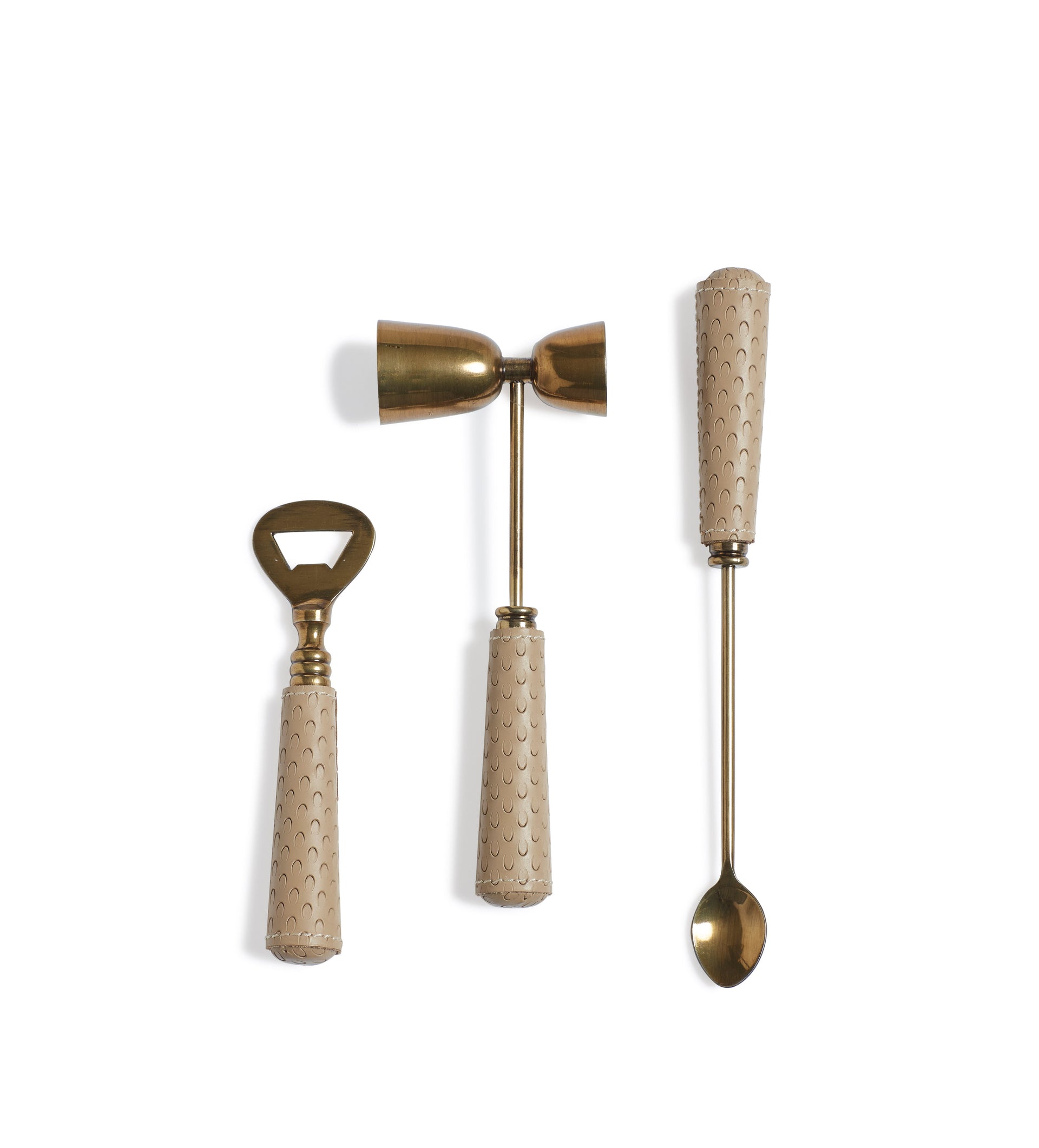How to Plan an Outdoor Kitchen — 5 Things to Do to Nail Down Effortless Entertaining
From location and layout to budgets and design details, bring your outdoor kitchen to life with this expert advice

Summer is here, so it's time to get your al fresco cooking game on. And if you fancy taking things up a notch from a pizza oven or barbecue, it's worth considering an outdoor kitchen.
Obviously the extent of your outdoor kitchen ideas will be dictated by your budget, the size of your garden, the weather in your region and the amount of time you can realistically spend outside.
If an outdoor kitchen means family mealtimes and fun gatherings can be enjoyed outside in the sun far more frequently, it's a worthwhile investment. So where to start? Find out what experts suggest.
1. Choose the Best Location

Finding the best spot for your outdoor kitchen is key; it needs to be located where it will make entertaining outside effortless. The idea of it is to enhance your life, not complicate it. Ideally, position your outdoor kitchen close to your outdoor dining area, where you can mingle and chat with your guests, rather than be cut off. Also, consider where the sun falls and the proximity to your indoor kitchen for comfort and convenience.
"Start with how you truly live," says Marie Flanigan, founder, Marie Flanigan Interiors. "I always encourage clients to think about the natural flow of their daily routine and how they already use their outdoor space. Do you love to entertain? Are you cooking while guests gather, or do you want to be more tucked away?
"Proximity to the main kitchen is key—it makes prep and cleanup much easier. Then think about light and shade. A space that gets late afternoon sun may feel too hot in the summer, while a shaded nook might become your favorite spot. The goal is to create a place that feels effortless—both beautiful and functional."
Steve Esdaile, founder, EO Kitchens, agrees, "Placing your outdoor kitchen close to your indoor kitchen makes life much easier, whether you’re carrying out ingredients, grabbing utensils, or heading back in for something you've forgotten. It streamlines everything and cuts down on unnecessary trips," says Steve.
The Livingetc newsletters are your inside source for what’s shaping interiors now - and what’s next. Discover trend forecasts, smart style ideas, and curated shopping inspiration that brings design to life. Subscribe today and stay ahead of the curve.
"Aim to position your kitchen where it gets gentle natural light in the mornings or late afternoons, rather than full midday sun. Observing how the sun moves across your garden can help you find the sweet spot. If full shade isn’t naturally available, consider adding a pergola, awning, or positioning it near some well-placed trees for protection."
Steve continues: "Choosing a location that’s close to existing water, gas, and electricity sources can save you both money and hassle, reducing the need for digging or major groundwork. A quick chat with a professional can help you figure out what’s possible and how to keep things efficient.
"Also, ensure your chosen location is free from potential hazards, such as overhanging branches or flammable materials, and add protective panels where needed."

Marie Flanigan is the founder and principal of Marie Flanigan Interiors, a design studio with a talented team of interior designers celebrated for projects spanning across the United States and a holistic approach that marries architecture and interiors.

Steve Esdaile, founder of EO Outdoor Kitchens, combines interior design expertise and craftsmanship to create bespoke, handcrafted outdoor kitchens that balance beauty, performance and a strong connection to nature.
2. Work Out Your Budget
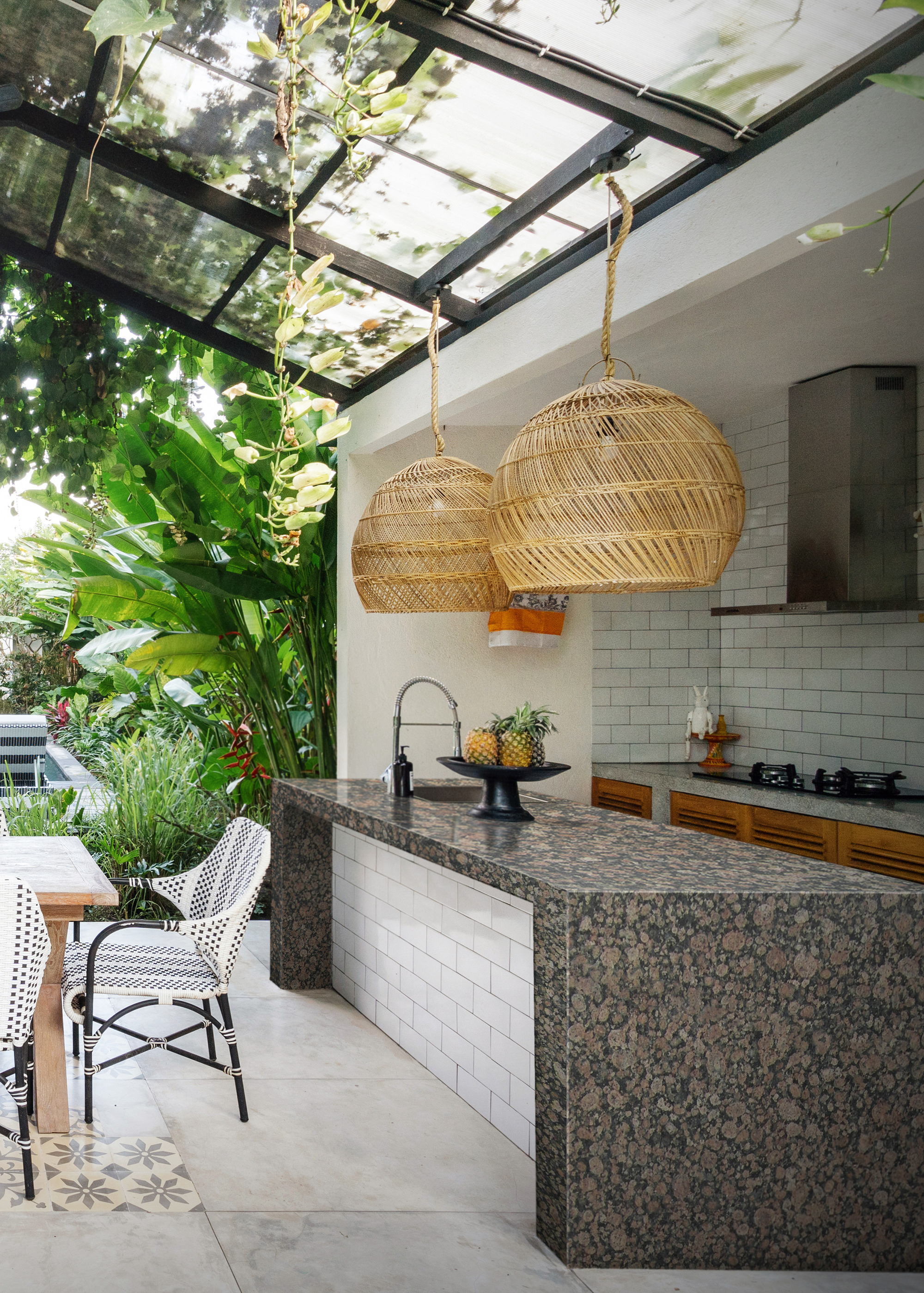
Once you have decided on the best location in your modern garden for your outdoor kitchen, work out how much you are able to spend. Most renovation projects go over budget, as unexpected issues can crop up, so include at least a 10% contingency in the total.
"First, decide on a ballpark figure you're comfortable spending," says Steve. "You don’t need every detail finalised right away, but having a rough budget in mind will help you focus on what really matters to you and make clearer decisions as the project progresses.
"Once you’ve established your overall budget, it helps to think about how to break it down. Although every design is different, we generally follow these proportional guidelines: For a large kitchen, you might allocate around 60% of your budget to furniture and worktops, 20% to appliances, and 20% to installation and services. For a small to mid-sized kitchen, the split is usually closer to 70% for furniture and worktops, 15% for appliances, and 15% for installation and services."
Steve says these figures are "based on our experience and offer a solid framework for planning, but they don’t include landscaping or groundworks, which can vary widely depending on your site and requirements. Getting a detailed quote is crucial. It gives you a clear picture of what’s included—and what’s not—as well as any warranties on appliances, materials, and workmanship. Future-proofing early on can save you both time and money later."
He continues: "If you’re also thinking about adding a pergola, we usually treat this as a separate item. Costs can range anywhere from £5,000 to £50,000, depending on the specification. We’ll advise on the best placement during the planning phase, but often recommend holding off on the decision until the kitchen is complete. A high-spec pergola can cost as much as the kitchen itself, so it’s worth basing that decision on how you actually use the space and making sure it fits comfortably within your overall budget."
3. Get the Scale and Proportion Right
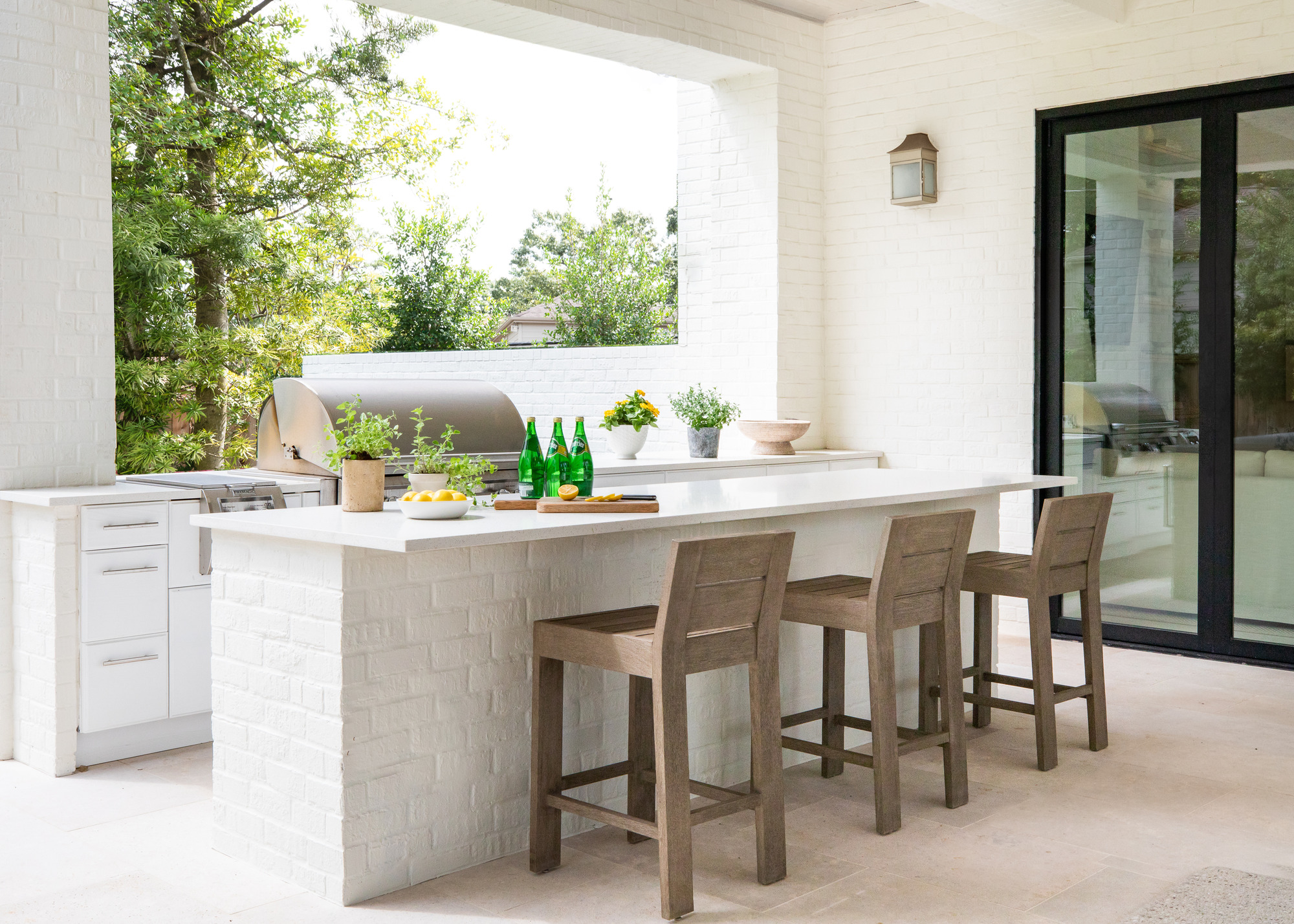
With your budget and outdoor kitchen location in mind, it's a good time to consider its size. In a small garden, a large outdoor kitchen would look out of place and unnecessary, so allocate a proportional amount of space.
"Once you’ve found the right spot, scale and proportion come next," says Marie. "The size of your outdoor kitchen should feel balanced with the rest of your home and yard—it should complement the architecture, not overpower it.
"I often start with the essentials: what will you actually use? A grill, maybe a sink, some counter space. Then build from there. Think through utility access—gas, water, electricity — and of course, your budget. Prioritize the elements you’ll use most. Even a modest setup can feel elevated with the right materials and thoughtful design."
Steve adds: "Your outdoor kitchen should feel like part of the garden, not something that dominates it. Think about how much room you need for cooking and prep, then scale everything to fit comfortably within that, leaving plenty of space for dining, lounging, or simply enjoying the outdoors.
"Ultimately, the best outdoor kitchens are designed to enhance your garden, not overwhelm it. A well-proportioned space will feel integrated and inviting - somewhere that works just as well for a quiet morning coffee as it does for weekend entertaining."
4. Consider the Best Layout
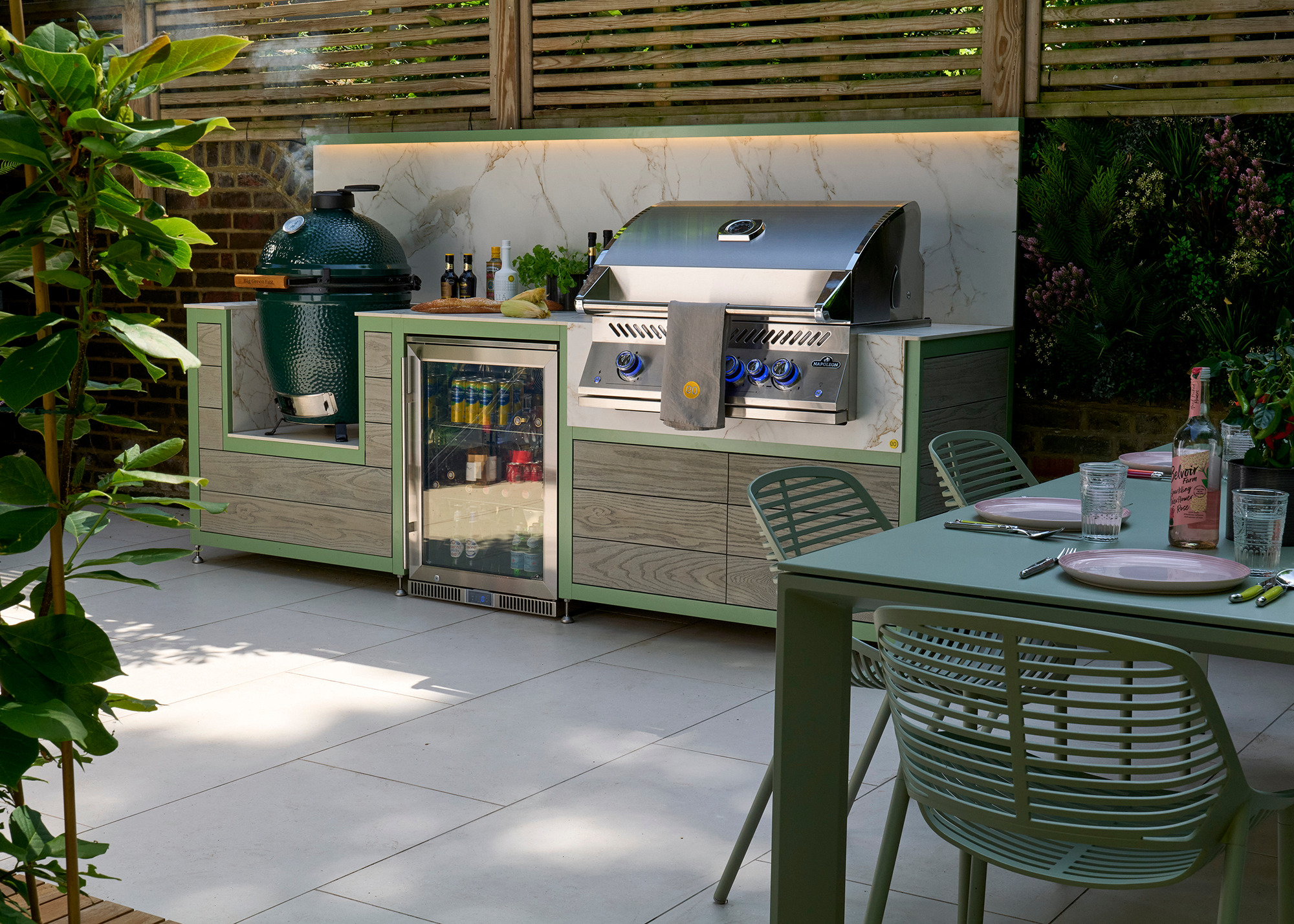
With the outline of your outdoor kitchen established, you can start to think about how you would like it to function. This will include the placement of cupboards for kitchen storage, kitchen appliances, and the amount of work surfaces you may need, as well as whether you want to face your guests when cooking or have them mingle around you.
"Think about how you’ll actually use the space," says Steve. "Are you the kind of cook who wants to stay connected to your guests while you prep and grill? Or do you prefer a setup that’s more functional and fuss-free? Your layout should support your lifestyle, not fight against it.
According to Steve, a popular option is a kitchen island, "that faces into the space this way, the cook stays part of the conversation, not tucked away in a corner. It’s ideal for hosts who love to entertain and want that open, inclusive vibe."
He continues: "However, compact doesn’t have to mean compromised. In smaller gardens, a straight run often works best, as it tucks neatly against a boundary or wall. Built-in storage and multi-functional features, such as a bench that doubles as seating and storage, can help you get more from less.
"Ultimately, the best outdoor kitchen layout feels like a natural extension of your home. It’s not just about squeezing in appliances—it’s about creating a space that flows beautifully, works effortlessly, and suits how you like to cook, live, and host."
5. Decide On the Design and Materials
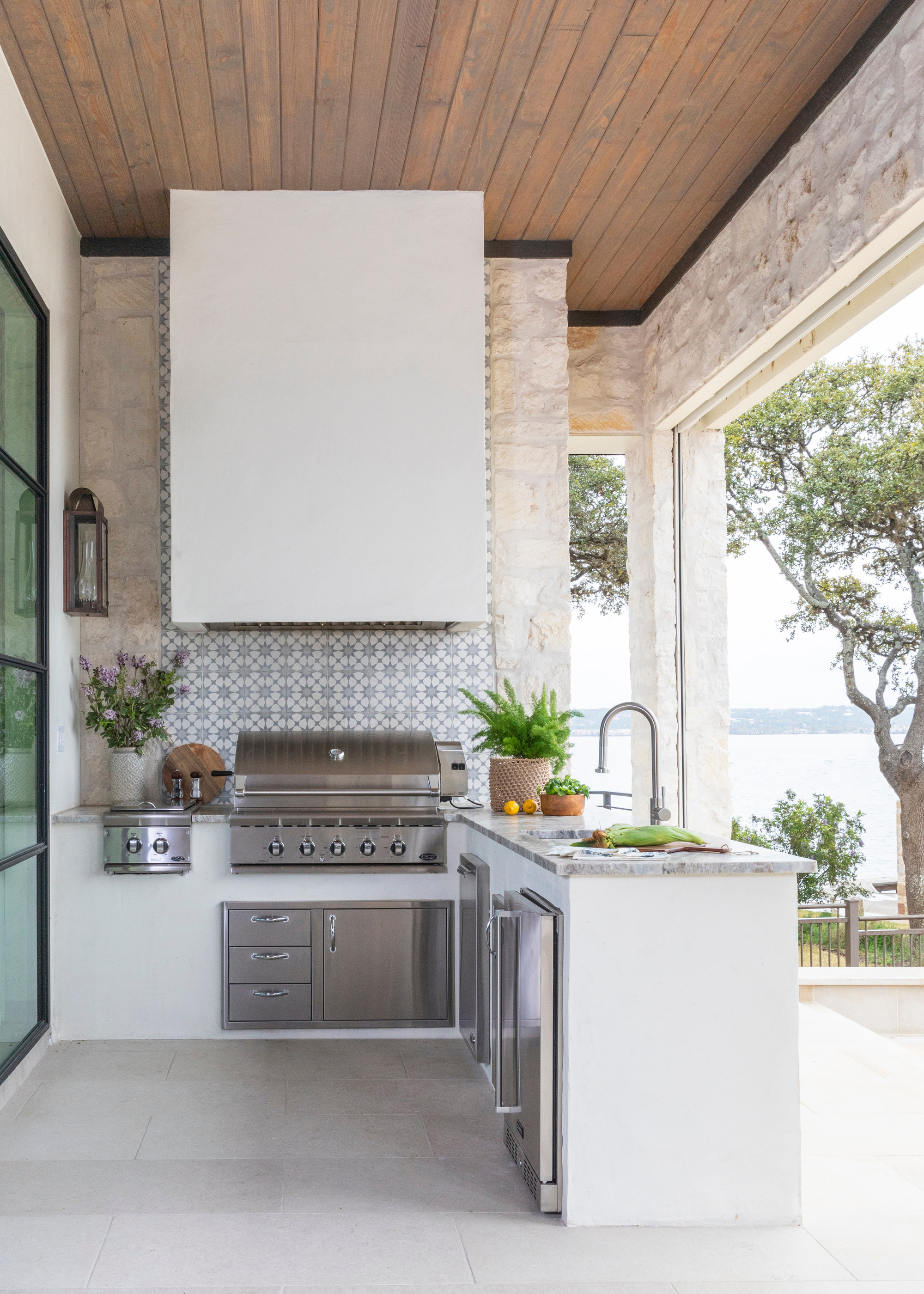
With the practicalities taking shape, the fun part — choosing colors and materials — can begin. Take inspiration from your interior design, as well as your garden and your lifestyle.
"I always begin with lifestyle — how do you gather, cook, and relax? These personal rhythms inform everything," says Marie. "Do you imagine big family dinners or quiet evenings with a glass of wine? From there, we can shape the design around that intention.
"And if you’re working with a landscaper, I encourage bringing your interior designer in early. Even outdoor spaces benefit from a cohesive vision—materials, finishes, and the flow from indoors to out should feel seamless. Collaboration from the start leads to a more thoughtful and harmonious design."
Obviously, with an outdoor kitchen, it needs to be able to withstand the elements, from high summer sun to rain, frost, snow, and harsh winter weather, even when it's undercover. S,o ensure the materials you choose are long-lasting.
"Durability and performance are paramount," says Oli Webb, director at stone brand Cullifords. "Choose materials that can withstand year-round weather conditions. We recommend ceramic surfaces like SapienStone for their UV resistance, heat tolerance, and low maintenance. For a more natural aesthetic, selected granites or quartzites offer both strength and style."
"Avoid the temptation to overfill the area with bulky appliances or oversized furniture," says Steve. "Instead, focus on what you’ll use most and build around that. If entertaining is your priority, you might sacrifice a large grill for a small bar or extra seating.
"It’s also worth considering visual weight — choosing lighter finishes, slimline units, and open shelving can keep things feeling airy and spacious. Good lighting and a safe, non-slip path to and from the space are small details that make a big difference too, especially in the evening," adds Steve.
Whatever the size and scale of your outdoor kitchen ideas, thinking through the practicalities before you commit will more likely result in a space that functions as well as it looks.
From how you will actually use it in the warmer months, to how you will protect it (or cover it) during the winter, carefully considering what might feel like the duller aspects of the design, will ultimately lead to greater enjoyment of your outdoor kitchen.
Jacky Parker is a freelance lifestyle journalist and writer, producing a wide range of features for magazines and digital platforms. She has written for Livingetc and its sister titles, Homes & Gardens and Country Homes & Interiors for more than 15 years, both as a freelance contributor and as Acting Digital Editor and Acting Style Content Editor, regularly reporting on the latest interiors, gardens and wellness inspiration, speaking to experts in their respective fields, and discovering the best tips.
Jacky has also written for other publications, including Sunday Times Style, The Telegraph, Architectural Digest, House Beautiful, ELLE Decoration, Red, Grand Designs and more.
